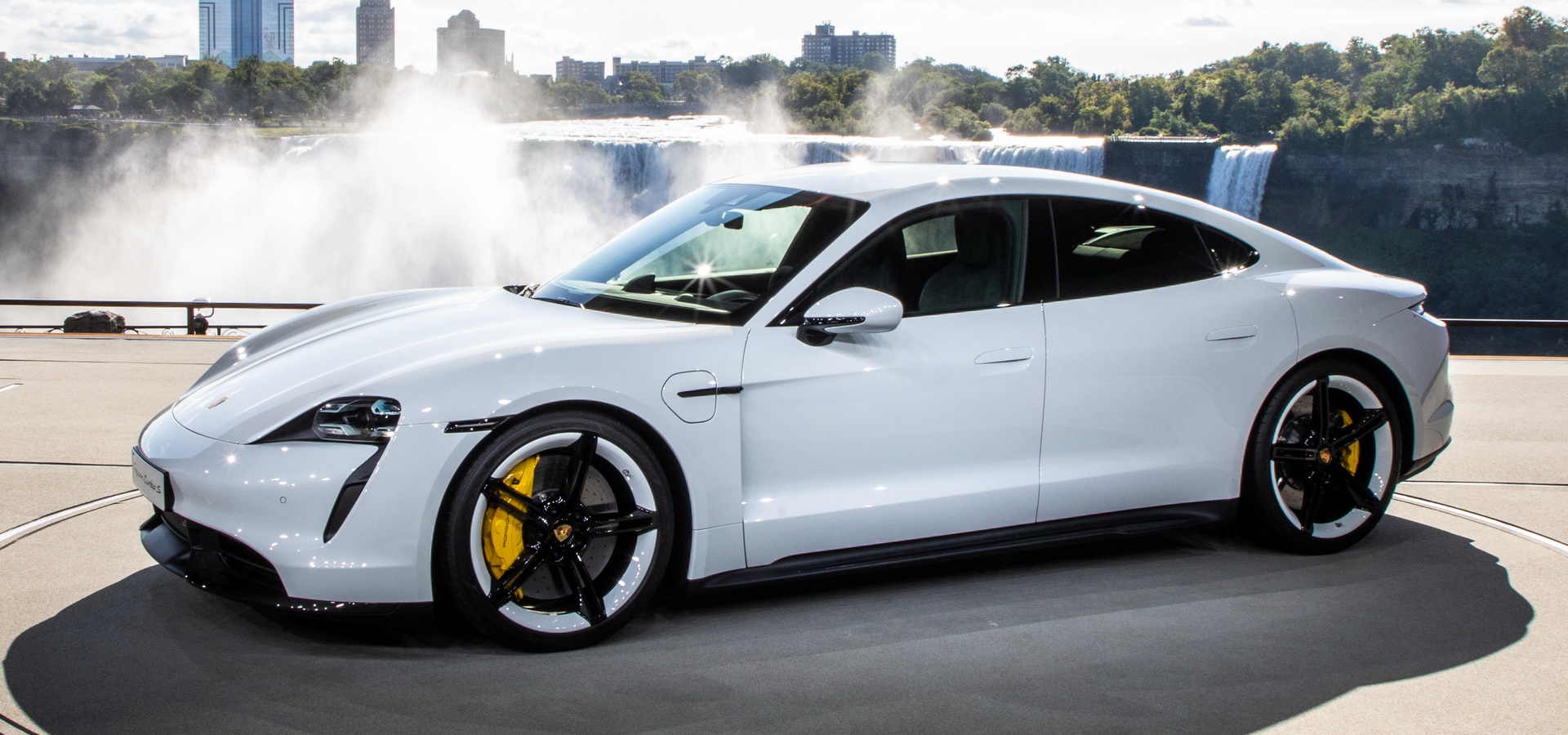The Tesla Model S has been in production since 2012, if you can believe it. So by the time Mercedes, BMW and Audi launch their own takes on what a fully-electric premium 4-door GT should be, we’ll be likely to have gone nearly a decade until the full establishment of this segment.
Thankfully, Porsche wasn’t willing to wait that long, giving the VW Group its first-ever (true) warrior to pit against the Model S. Audi’s e-tron GT is of course on its way too, but not for another 12 months or so.
But we’re here to talk about the Taycan and how its flagship Turbo S variant compares to the very best Model S from Tesla, specifically the P100D Performance.
Pretty meets witty
Porsche had a massive advantage when designing the Taycan – the fact that they already knew everything there is to know about their competition. So while the Model S has been – and still is – a remarkably elegant four-door car (5-door, technically), the German automaker took things to another level, coming up with a design that’s clearly more futuristic, or at least more modern than the Tesla’s.
Of course, we’re not here to say that one is better-looking than the other, but looking at the two side by side…there’s very little doubt as to which one has already been with us for a longer period of time.
It’s also meaningful to say that the Taycan has a more sporty presence to it, thanks to that flat front end with the highly contoured wings, a staple of Porsche design. However, both models have thick, sculpted rear arches, so it’s not like the Model S’ stance is a lot less visually aggressive.
Hide your Ferrari
You’d be hard-pressed to find a supercar that’s as quick, let alone quicker off the line than any of these two fully-electric models. However, if you simply have to have the absolute fastest-accelerating family car in the world, the numbers say that the Tesla Model S P100D Performance is still the one to have, although the difference is negligible.
– Porsche Taycan Turbo S: 93.4 kWh, 616 HP (750 HP w/Overboost), 0-60 in 2.6 sec, range 256 miles (412 km)
– Tesla Model S P100D Performance: 100 kWh, 762 HP, 0-60 in 2.4 sec, range 345 miles (555 km)
We reckon than either of the two should completely satisfy your need for pulling power, but the fact that the Model S can cover more distance on a single charge cannot go unnoticed, even though a range of 256 miles (412 km) is nothing to laugh at.
Let’s be practical
The Porsche Taycan measures 4,963 mm (195.4 inches) in length, 1,966 mm (77.4 inches) in width / 2,144 mm (84.4 inches) with mirrors and has a 2,900 mm (114 inch) long wheelbase. The Model S is 4,980 mm (195.9 in) long, 1,964 mm (77.3 inches) wide and its wheelbase measures 2,960 mm (116.5 inches).
The Tesla also has more cargo space in the rear with 26.3 cu.ft (744 liters) versus the Porsche’s 12.9 cu.ft (365 liters). However, the latter features more cargo room in the front – 2.9 cu.ft (82 liters) versus 2.1 cu.ft (59 liters).
But the most compelling case in favor of the Tesla is undoubtedly the fact that it costs considerably less to purchase.
Also read: Elon Musk Is Sending A Tesla Model S To The Nurburgring – Should The Taycan Worry?
The Porsche Taycan Turbo has a base MSRP of $150,900 ($153,310 at market launch), while the Turbo S will set you back $185,000 ($187,610 at market launch). Yet, you could land a Model S P100D Performance right now for $99,990 if you wanted to. Add a couple of pricey options to the Taycan Turbo S and you could make an argument that it would cost twice as much as a flagship Model S, which is pretty unjustifiable for the sake of this comparison.
But Porsche is probably looking at this situation completely differently. Their Taycan is a Porsche first and foremost, not some rival to X, Y or Z. It’s also their first ever fully-electric model, and one that was built for sustainable performance, able to conduct lap after lap without overheating, which adds a lot of value to it.
What about quality and comfort?
We’ll definitely have to wait and see which of the two makes for a more comfortable cruiser or has better overall onboard tech. Porsche didn’t get into too much detail regarding everything you might find inside a Taycan, but we wouldn’t be surprised if overall quality is superior in the Porsche.
The latter’s dashboard is also more driver-focused than the Telsa’s, boasting a 16.8-inch curved gauge cluster display, a central 10.9-inch infotainment display, an optional passenger display and an 8.4-inch touchscreen with haptic feedback for the climate control, seat settings and so on.
Meanwhile, the Model S’ gauge cluster screen measures 12.3-inches, while the main display is a massive 17-inches and certainly needs no introduction.
Bottom line
Remember that Porsche straight up referred to the Taycan as an electric sports car, not a four-door GT or a family car or any other term that you might associate with a Tesla Model S, so at least in some ways, one could argue that this comparison may not be fair.
On the other hand, let’s not kid ourselves. There are way more similarities between them than there are differences, which means it’s Judgement Day for the Porsche Taycan. Do you think it’s worth all that extra money compared to the Model S?













